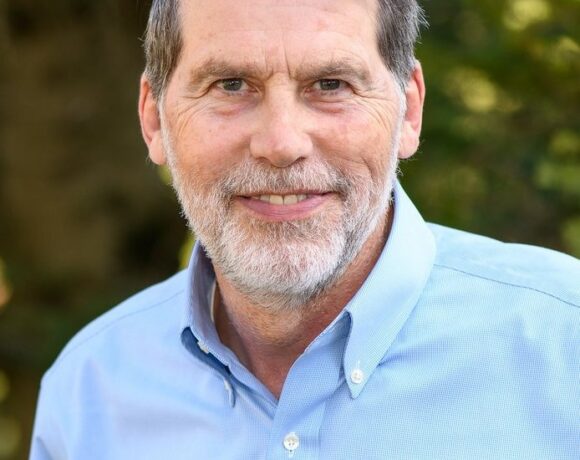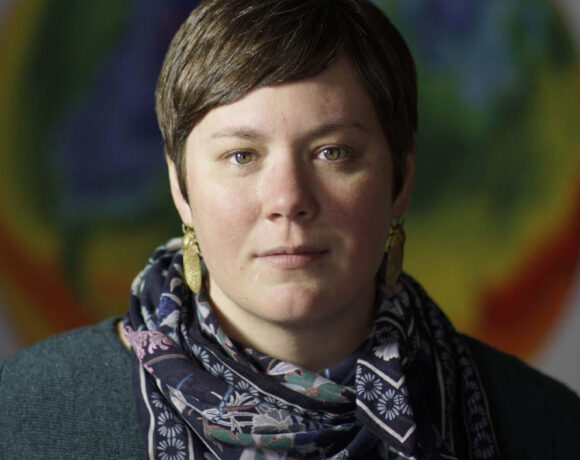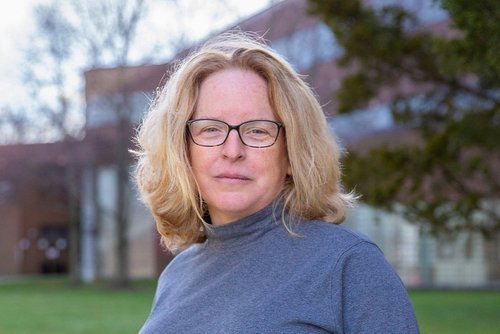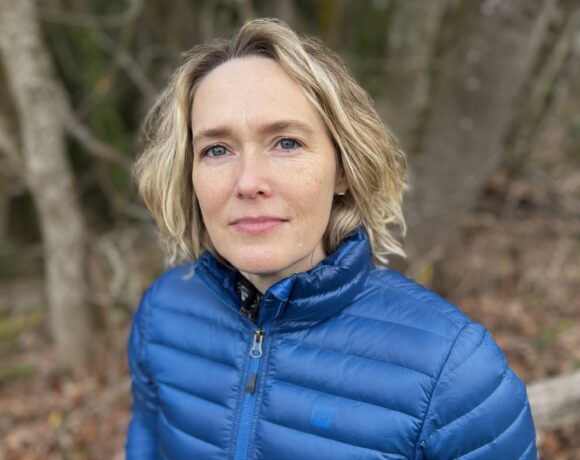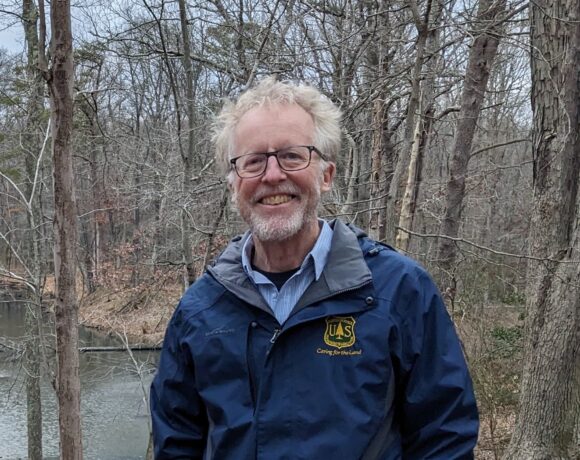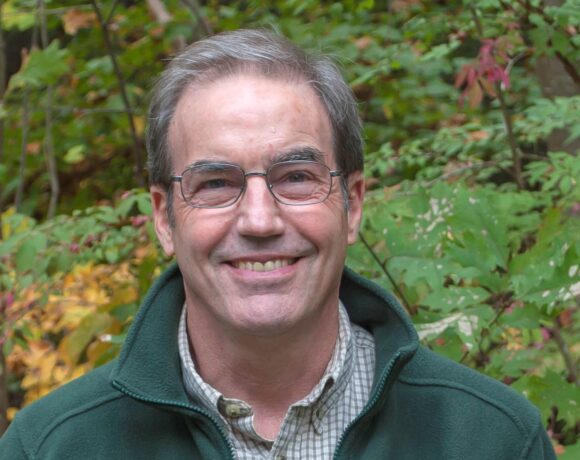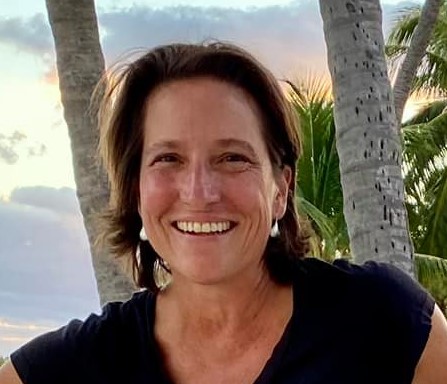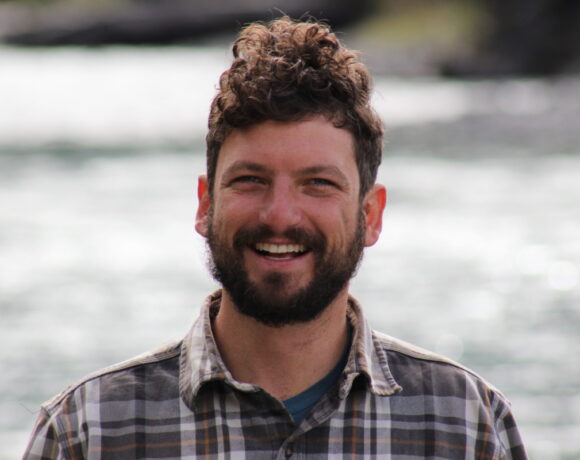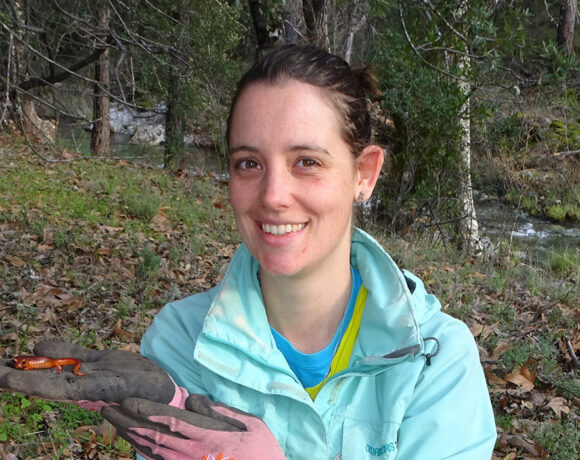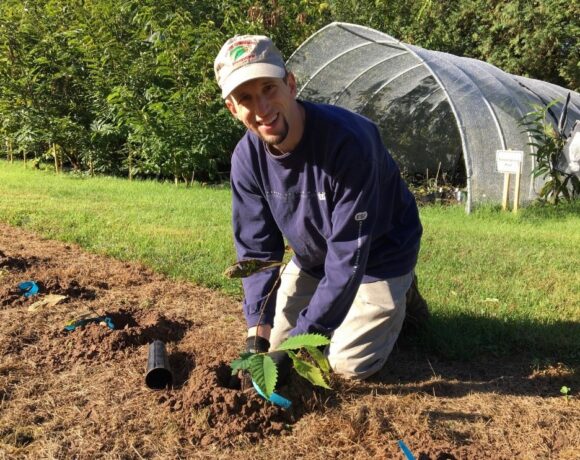This month, we interviewed Dr. Jacquelyn Gill, a paleoecologist whose research on the past 20,000 years can help us road map into the future of plant management in a changing climate.
Watch the interview here:
View transcript:
Justin Dalaba (JD)
All right. So, hi, Jacquelyn. We’re here with you today to hear a bit about your research, which kind of zooms out and takes a different look at scale and time. So, it’s going to be really cool to kind of get your perspective on, you know, plant community change over time. So just to start out, tell me about your work at the University of Maine. You know, what’s the story behind the BEAST lab and what you guys do?
Jacquelyn Gill (JG)
Yeah, well first of all, thank you for this opportunity. I’m really excited to share these longer-term perspectives and I think we can just start with the BEAST, which is an acronym that stands for Biodiversity and Environments Across Space and Time. And that really reflects the fact that we do four-dimensional ecology in this lab. We think about large spatial scales. So the scale, the scale of you know as small as the community, but as large as the range for a lot of plant species, but also really long time scales. We do some work in the modern, but we spend a lot of time, you know, really thinking about the last 20,000 years or so since the end of the last Ice Age. Some of our projects even go back even further to the extinction of the dinosaurs. That sort of ushers in the modern era, which you might think 65 million years ago, doesn’t sound very modern, but sort of ecologically, that’s when the rules get set up for life as we know it on this planet. Sort of the age of angiosperms, the age of mammals, really, everything that you know, it’s really hard to know where we are without knowing where we’ve been and that’s really I think the core vision of our Lab is to take the past as a road map into the future. We’re very, even though we spend a lot of time thinking about past ecosystems, we’re very much motivated by the conservation questions of the present, so the climate and biodiversity crises, the impacts of extinction, whether plants can keep track with the climate changes we’re experiencing or projected to experience in the next century, all of these things can feel very new and scary, but we have wonderful analogs in the past that can really help us not only understand how these species are really experiencing their world now, but also we can use these as sort of what we call natural experiments, in global warming and extinction, that can inform the way that we manage or sort of do triage for managing these ecosystems going forward.
JD
I love that you know, many of us live on this earth for such a short time frame and you know, within that, you know, we’re working to just understand this really small aspect of whether it’s forest ecology, plant communities, you name it. And so, it’s really cool to hear like that your work is able to just give us the bigger picture, which kind of sounds like a new concept. In what you’re thinking about, but I’d love to hear your journey to becoming involved in this, you know how did you get involved with research on global change through time and what’s driven you to where you are today?
JG
That’s a that’s a great question and one that I get often is and it’s, you know, really understandable because it’s not necessarily something that you, it’s not a, it’s not a job you come across, right. And I should say, growing up, I was a child of the 80s and you know, teenager of the 90s. So I very much was, you know, sort of part of Captain Planet generation, you know, growing up with a, a strong understanding of these environmental problems that we were, you know, developing and ironically, climate change wasn’t very much on the radar at that time, yet sort of broadly, at least for me as a as a child growing. But you know definitely the understanding of you know Fern Gully right, like the rainforests are being cut down. We have threats to our biodiversity. And I grew up very steeped in that sense of duty and responsibility to give back to the natural world. I also grew up roaming around the woods of New England and really feeling a deep sense of place, a deep connection to place. Which I think is really important, right? I think we are drawn to this kind of research to understand and protect the places that we care about. And I think that’s definitely true for me. And so, I went in to college thinking that I wanted to do some sort of environmental work. I didn’t know if it was going to be policy, or something else. I also had a really hard time just settling down in general. I loved theater. I loved journalism. I was really interested in history. And you know, even within the sciences, I couldn’t decide between Earth science, biology and all at the same time, I just had this sense of wanting to be useful, right. Wanting to put my skills and passions to, to use, to serve world problems, and so then you know, Fast forward to college. I landed at College of the Atlantic in Bar Harbor. And I was still sort of feeling this crisis of not knowing what I wanted to do. And I think just being around the glacial landscapes of Acadia National Park, just having that kind of in the background, you know, for my ecology labs, we would go into the park and we would explore these, you know, sea cliffs and sea caves that were at sea level, but then we’d hike up 250 feet and see the same features. And just this constant reminder that you know this landscape has changed through time. We used to be under a tremendous amount of ice, which means that everything that lives here now was living somewhere else, right? And So what does that mean? And in terms of how we think about just how these communities come together and how they respond to these extreme global change events. And those kinds of moments felt like they were kind of crashing up against what I was learning in my, you know, ecology readings or my textbooks right, that had this very static view of nature, this idea that we’re sort of, you know, we get to a climax and then that’s sort of the way things are supposed to be and we manage ecosystems with that in mind. And the more time I spend outside, the more time I really spend learning about the past. The more I realize that there’s more dynamism, more change in nature than I think I, you know, I was being taught to appreciate. And so not only just from like, a basic ecology standpoint, you know, how does that? How does that expanded time scale view start to challenge and undermine these ideas about what we should be seeing in nature? But then of course the natural extension of that is OK. How do we manage ecosystems if we think they’re supposed to be a certain way? And you know a few years ago at an ecological Society of America meeting my former PhD advisor Jack Williams gave a keynote address where he said we are all Paleoecologists now because we are studying systems in change, right they are systems and flux systems undergoing them. Tremendous large-scale global forces that are changing our world and you know this is what we’ve been training for, right. And so, we have a sense of, OK, how do we approach these kinds of problems and questions because we have that Longview. But remembering that, like, you know, even though we’re zoomed out over 20,000 years, we can still resolve our understanding of these systems down to, you know, annual, decadal or Centennial scales, right? It’s not like it our understanding of ecosystems gets blurred at a scale that’s not useful. The kinds of archives that I work in in the natural world in some cases, you know, we can look at community changes or range responses for species that happen, you know, well within the lifespan of an understory plant. Certainly a tree or a person, right? So that these are relevant time scales to understanding what’s happening in the modern.
JD
Yeah, absolutely. I love to hear your story of how you know your kind of past life has really formulated who you are today and how your work now you know, informs current and future challenges through through looking into the past. And I share a similar story of growing up with a love for the outdoors, connecting with forests, and that’s really how I fell into this field as well. So, you know, I’d love to hear more about some of the specific questions that you’re kind of exploring or have explored that relate to climate change and plant community change. And specifically, you know, thinking about we work with an audience of primarily invasive species managers, so tell us about some of the questions you’re looking at there.
JG
So basically, you know my some of the biggest questions that we address. Half are like I said are very much rooted in in modern, modern concerns. So, can plants keep pace with climate change? They can’t get up and move around, right? Unlike animals, you know, they’re really just throwing their genes across the landscape as and that’s how they sort of move their ranges. But we in my field, we talk a lot about plants undergoing range shifts, right or migrating… trees migrate in, in my world, right? Although you know it makes you think of like Macbeth, right, the trees are getting up and kind of walking. Across the landscape. But you know, for these long-lived organisms that really can’t get around very quickly. The fossil record can tell us, you know, how quickly can we expect trees to be able to keep pace? What kinds of trees have an easier time doing that than others? What are the responses of these systems to changes in fire regimes? You know what drives those fire regime changes? Is it people? Is it climate, right? People have been here in New England since deglaciation, and so they’ve been a part of the story as well. For plants like Alpine plant communities in in the northeast, which is a system that we’ve started working in in the last few years. You know, these are ancient tundra relics that used to be part of a broader tundra ecosystem that was living South of the ice sheets and then as the ice sheets retreated, the tundra crept back up north again. But now these Alpine communities are separated from sort of the mainland Arctic by thousands of kilometers, and they’re just on these little tiny isolated islands. First of all, how have they managed to do that? They’re small populations, they’re highly isolated, super fragmented. All of our conservation understanding tells us that that should not. You shouldn’t be able to persist for 20,000 years that way. So, we’re trying to understand and untangle how it is that these plants are able to do that or have we been losing species from these mountain tops over this, you know, entire several thousand year sequence? Another big threat of our research looks at the interactions between plants and animals, specifically what animals do to plants other than eating them, right? So thinking about, we have some work in the Falkland Islands where we look at the nutrients that sea birds provide to terrestrial ecosystems and how they’re really structuring those systems through their guano deposits, which are rich in all kinds of nutrients like nitrogen. And then I spent a lot of time thinking about what happens when large herbivores go extinct. So, we know why big animals are heavily threatened today. But what we have spent a lot less time on is what happens after you lose that animal. In other words, what are we losing if we lose a woolly mammoth? From the ecosystem in terms of their dispersal, the ways in which they sort of manage how plants are interacting with each other. So there’s a lot of work there that I think is really relevant to Arctic ecosystems and even to, you know, the temperate, deciduous or boreal forests that we sort of have kind of suturing up here in New England. And you know where I do a lot of my work and just really thinking about, you know, from the plants’ perspective, woolly mammoths and, you know, even bison and some of these, you know, Caribou, they haven’t been gone for very long, not long enough to really drive big evolutionary changes. And so, you know. How does our understanding of these ecosystems and how they’ve evolved… How is that limited by the fact that we’ve really downscaled some of the, you know, body sizes of the animals that live in these systems? How does that affect things like a tree is able to disperse or you know, how resilient a tundra ecosystem is to warming? And it turns out you know from some of the work that we’ve done using the Pleistocene extinctions as a sort of again natural experiment, large animals are probably they’re probably driving a lot of ecological resilience and so losing them 20,000 years ago to 12,000 years ago across the globe has probably undermined the resilience of a lot of our plant communities.
JD
Yeah, wow. That’s all so fascinating. And I feel like there’s just a ton to unpack there. I wanted to hone in a little bit more now on you’re talking about the idea of, you know, plants migrating. And so now, as managers, helping plants on the landscape and there’s this idea of plants may be limited in their ability to move with climate change, or some may be expanding to areas where we haven’t seen them before. So, I’d love to hear your perspective on, you know what it means to manage a plant community and you know, how do you determine or should you determine when to intervene?
JG
I love this question so much and emotions can get so heated around this question, you know, I’m I do a lot of public outreach. You know, I do a lot of science communication, but I’m also just a person in a neighborhood and who lives in Maine. Right. And so I’m a member, for example, of a lot of Facebook groups for Maine native plants. And I have seen groups like last summer, several of our groups just completely melted down because people could not agree on what native meant right from a plant perspective. So, thinking about for example, let’s say you have a species of plant that has that you know has been native to the Appalachian Mountains, has never quite made it over the border into Maine during this current interglacial that we know of. So, you know, might have been here at some point in the past, our previous interglacial about 100,000 years ago might have been as warm or a little warmer than our current one. So, if plants are tracking their ranges right, you know they might be starting to move into the Northeast naturally on their own, right. And I personally would see that as resilience. That’s a feature, right? That’s good. It’s not a bug of those of this plant communities. I think of those as sort of, you know, climate refugees, if you will, from a plants perspective. So just as the southeast of the U.S. had to accommodate all of our species during full glacial conditions, when they all got displaced by the glaciers, now you know we’re starting to see some things that are moving up into the Northeast that haven’t been here for a while. Some people would say no, it’s never been in the borders of Maine. Although you know, plants don’t care about geopolitical borders, but that’s another conversation. So, some people would say no, they’re non-native, even though you might find them in, you know, Pennsylvania, New York, Connecticut, Rhode Island, right? They’ve never been here. They’re not native, and they should be eradicated. That is not a strategy that is robust to climate change, because what you’re basically saying is we’re going to doom these plants to extinction because we’re not going to allow them to track their climatic niches as they move northwards. You know, we have lots of moral conversations and ethical conversations to have about that, but just from a scientific perspective, if I didn’t see plants moving right now with a century of warming. That’s why I would be concerned, right? And many plants can’t track their climates, because maybe they’re missing a disperser like a passenger pigeon. Or maybe there’s too many roads and farmlands and industrial areas, residential areas that are blocking their migratory pathways. And again, it’s probably blowing some people’s mind to think about plants migrating, but that’s just, you know, when you zoom out at that scale, that’s just the only language we can use. But you know, I would expect to see more and more of these, you know, quote unquote, climate migrants moving into the Northeast as the world warms. You know, if our climate is going to start to look like Rhode Island and Maine, we’re going to start to see more of Rhode Island’s plants living in Maine, right? That’s just basic science. That’s how that works. So I don’t have a lot of moral panic around those kinds of changes. Am I sad that the plants that I maybe grew up with in Vermont or in Bar Harbor ME might start to themselves, migrate into Canada? That’s one of the consequences of climate change. But I would be a lot sadder. If those plants just went extinct, right. You know, one of the things that we work on in our lab is this concept of climate refuges, or refugia, or plural. And that’s the idea is that a refuge from a climate perspective is a place where a where a species goes and or hangs on like the top of, you know, Katahdin or Mount Mansfield, right? Those little Arctic populations of plants, a refuge is a place where you hang out with the understanding that you’re going to re-expand when the climate changes again and becomes more favorable, and so, you know, we can help identify where those refuges are, but we also have to accept the fact that they might not be, you know, within the boundaries, the tiny boundaries that we’ve drawn. We might have to expect more change than we might be normally comfortable with, but that change is not always bad from a biological perspective, right? These species have been coming together and separating. They’ve been tracking their own climates, you know, very individualistically for thousands of years, and that is certainly going to continue into the future, especially as we’ve accelerated the rates of climate change. But what it also means from a conservation perspective is that in order to allow this to happen, because again, if we, if we agree that we want these species to continue to exist, what we might need to do is help them get where they need to go. And so that’s where strategies like managed relocation or assisted migration start to come in. And the Paleo record can also really inform, you know, which species, what types of species might need a little bit more help. Maybe they’re particularly rare or slow growing, or something like a Serpentine soil specialist, right? Like those have somehow persisted despite lots of climate change in the past. But in order to continue to do that going forward because of so much habitat fragmentation, you know, they’re probably going to need our help. And so, we can actively and should I think, actively intervene to make sure that happens.
JD
Yeah. And you know. I wanted to dig a little bit deeper into the plants that aren’t necessarily or haven’t been a part of that picture, right? So, like the invaders that are now becoming a part of these communities, I wanted to hear your outlook on that in terms of like the management perspective, you know, how can your work and what you’ve seen through your research, help sort of inform the way that we’re managing not only like natives and helping them along, but the invasive species that are also not historically a part of that?
JG
That’s yeah. And that’s a that’s a great point. And I completely left out right the, you know, I talked about the sort of range shifts within our continent, but then there are these continental jumps, right, we get the species from Europe or Asia or elsewhere that are sort of translocated across continental boundaries. And there are some examples of that that have happened over time in the fossil record. They’ve been, especially the deep time fossil record, you know, for example, when North and South America finally attached the ESPYs of Panama rose out of the ocean was a very slow process. Suddenly we see this exchange of species across 2 continents that had never in their history. You know, we’re attached now, but prior to that, North America was, you know, attached to Eurasia and South America was part of like Antarctica, you know, parts of India and Africa, right? So no evolutionary history whatsoever of connection between these continents for a very, very, very, very long time, like long, long, long before the dinosaurs. So that’s a really novel exchange, right? So, we do have some examples of that happening in the past. But today you know we’ve obviously, accelerated that exchange of species. And so what I would say is from my perspective, you know I judge a species by its impacts and not by its origins. So just because a species is not from here or as we would say in Maine, it’s from away, does not necessarily mean that you know, in my opinion, I don’t know that that necessarily means that I need to devote a lot of my attention to eradicating that species, we’re performing a lot of experiments right now with translocations of species, but not all non-native species are harmful and some native species can become invasive under global change. And so, I think a lot of our buckets, our categories that we like to put things in are starting to become, you know, broken down by the realities of contemporary Climate change and the movement of species around the globe that that you know this, this massive experiment that we’re engaging in. But having said that if you look at invasive species work, most of the extinctions that invasives are creating is across trophic levels. So it’s like a predator, you know, prey kind of dynamic, like introducing cats to Hawaii, right? When it comes to plants, plants seem to just get along really well. You know, they sort of, they sort of, you know, just like, pack it in like, let’s add some more plants and there are some, you know, short term examples where that doesn’t happen, right where you can see, you know, like garlic mustard taking over the understory. But if I were a betting person, I would bet you that in 100 or 300 years or so they they’re going to sort it out. I don’t think that garlic mustard is. This is probably going to get me some hate mail, but I don’t think it’s going to cause a bunch of plant extinctions. And in fact, if you look at, you know. At least as long as we’ve had plants, plants very rarely go extinct at all. They’re incredibly resilient. They survive most of our mass extinctions, really without, you know, very much impact at all, which is still a puzzle but probably has a lot to do with the fact that, you know you can basically have your entire organism in a little escape pod known as a seed that can hang out in a seed bank. You don’t have to have a direct connection between one generation and the next, right? You could have a lot of time elapsed between those two generations. So, plants are a lot more resilient than we think and. More resilient than we appreciate, but I’m not going to say that you know we shouldn’t care about these things. I just think that. we should be careful to be good scientists right to not have preconceived ideas about what these invasive species are going to do to study them in place and watch how things are playing out, to intervene when we can, but not to have intervention just be a knee jerk reaction with the assumption that ohh, it’s new, it’s novel and therefore it’s bad because I don’t think… I think that that sets us up for overwhelm, failure and misdirecting resources when we’ve got extinctions happening, you know you elsewhere or other urgent, you know, conservation measures that need to be addressed. Right? And so, I think overall, I would say we’ve spent decades trying to figure out why some species become invasive and others don’t. But I think the biggest, to me, the biggest take away is just to go back to that initial message of, you know, judge the species by its impacts, not its origins and really figure out what information we need to intervene. And not just assume that because something is new that it’s bad.
JD
Yeah, I and I recognize it’s such a complex question of like, when do we manage? But you know, I think you touched on some really interesting points there and the actual mechanisms by which, as you say the plants, whether you know maybe sort it out or don’t, we’re still just really starting to unpack those. And also, in terms of like what the impacts are and how we measure those. I feel like we’re really getting into those complexities now in the literature. And so yeah, there’s potentially value to letting small plots of invasive plants sort of just be and see what happens, and studying that and then figuring out, you know, like what are the mechanisms here, what are the impacts and then how do we manage it most effectively? So that’s really interesting.
JG
I think there’s. Yeah, I think I think it’s just, you know, we can expect a period of upheaval, but you know, I would love for example, like there are a bunch of species that are North American that have been in Europe, like prickly pear cactus for example, in the Mediterranean for so long that we have, we don’t call them invasive, right or non-native like we have a completely different language around them, they’re considered to be you know, part of the local communities and, you know, I think maybe working at that scale, I would love to see more work done to sort of integrate that historic perspective of like the last 500 years or so because you know, they’re when I lived in Italy, you know, the little Italian grandmas were picking the prickly pears, right? And that was just sort of part of, you know, they were considered to be part of the local flora in, in the place that I lived and. You know, it was only much later when that I realized, like, no, those were translocated during the period of European colonization. And so, we have a there’s a lot of species in the Mediterranean and other parts of Europe that are like that, species that are considered native to the British Isles that were introduced 1000 years ago. Right? And so, we have some really nice examples for sort of what that scale of impact is like, Is it just? You know. You know, if we had been ecologists 500 or 1000 years ago, would we be having the same panic over those species? Or, you know, could we see that sort of there’s like, a period of upheaval and then just adjustment and then things kind of level out and it’s fine.
JD
Yeah, amazing, and I’m looking at the time here and I realized we got so caught up talking about, you know, the history and time scale plans that we need to round out the conversation. So, I could talk for hours about this. This is so interesting.
JG
Yeah, I could do. One more question, whatever you’ve got.
JD
Yeah, yeah. So maybe just kind of a final question to round things out. So, you know, we’ve spent some time talking about the past. Let’s talk about the future. So, what lies ahead for you and your research?
JG
So I’m really excited to start working with ancient DNA. So like I said, we work with a lot of these sedimentary archives. So you know if any of your viewers have seen shows like CSI or Bones, you know it’s really the same kind of forensic tools that we’re using to reconstruct these ecosystems. So it’s not crime scenes. It’s just, you know, it’s natural communities, right? And so. So those tools are really strong and they’re powerful, but they have some limits in terms of their taxonomic resolution. So I work a lot with pollen for example, which is preserved in bogs and in the mud at the bottom of lakes. And so then we can extract that and basically create a time series as we go deeper, we get older, of what the vegetation was like on the landscape. But a lot of pollen as beautiful and resilient as it is. I mean, you can pull pollen grains out of, you know, 50 million year old rocks and you can dissolve the rock and the pollen grain is still there. It’s amazing and it’s gorgeous. But a lot of the that pollen can only be identified to the genus or the species, or sorry, the genus or family level. And so, we’re starting to work with ancient DNA, which are little broken fragments and bits of DNA that are left behind by these organisms to get us to more species level resolution for some of the questions we’re interested in. So that tool is an exciting new direction in our lab. And then like I said, you know, we’re just now starting to work in the Alpine of the Adirondacks. Through the Greens, the whites and into the mountains of Maine, and you know, maybe getting up into Canada and really trying to understand these amazing low elevation Alpine zones and these sort of islands of Arctic habitat that have been incredibly resilient to climate change and to try to understand. You know, what’s their secret? And maybe they’re a good model for thinking about, you know, how species are going to adapt going forward because, you know, we have no idea if a Diapensia on the top of Mount Washington is very related to a Diapensia on the top of Mount Mansfield. Are these plants sort of winking in and out and repopulating across the archipelago of the New England Alpine. How separated are they from the Arctic mainland, right? There’s a lot from a genetic and functional and just Community perspective about these plans that we just, we have no idea. We don’t know if we had twice as many 5000 years ago as we have now, so we’re hoping to use the sediment record from Alpine lakes to and combine that with some modern surveys to really help disentangle this question, because I think they’re really fascinating and they’re incredibly, culturally important. Of huge interest and they’re very threatened both by climate change and by being loved to death by the hikers who come up to see them. So, we want to really make sure that we’re understanding them and making good choices about how to manage them going forward.
JD
Some really exciting things ahead. That sounds like a really cool array of work that you have upcoming. So where would you direct people who want to stay tuned in to your work and keep an eye out for the results of that research. I know you have a lab website, is that the best place to?
JG
Yup! Beastlab.net. Hopefully we’ll, you know, we’re working on renovation lab renovations to the website so far and hopefully that will go live really soon, and also I’m on Twitter as long as that continues to exist @JacquelynGill and also just always happy to get emails jacquelyn.gill@maine.edu.
JD
Well, Jacquelyn, I really appreciate your time and opening up your schedule and your knowledge to us. So this has been really informative and I’m looking forward to sharing this with our audience.
JG
Well, thank you so much. I really appreciate it. Had a great time.
Learn more about Jacquelyn’s work here: https://jacquelyngill.wordpress.com/
More researcher spotlights:



